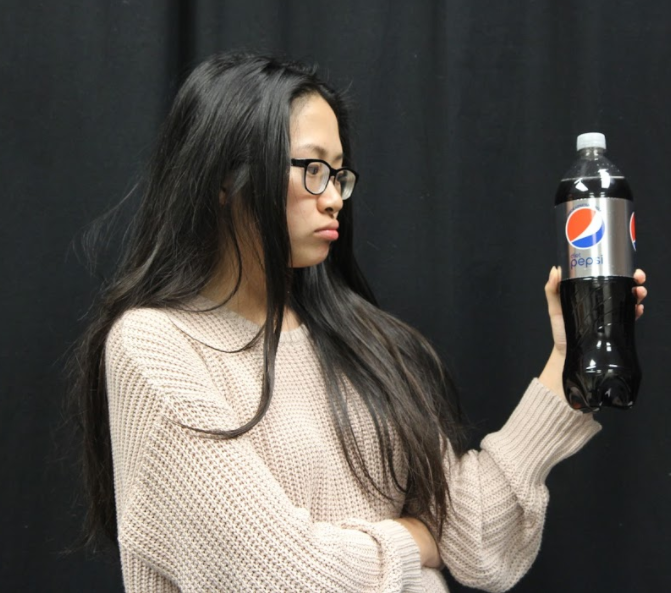Pepsi’s commercial sugar coats reality
In My Opinion
April 27, 2017
While scrolling through my Instagram feed one day, I came across a Pepsi commercial and noticed the comments section was full of criticism. Naturally, I watched the video, which features pop culture icon Kendall Jenner in the middle of a photoshoot while a protest takes place. She joins after an Asian cellist invites her in, while ripping off her blonde wig and grabbing a can of Pepsi. As Jenner approaches the police officer in the front of the protest, a Muslim photographer shoots pictures of her as she essentially “ends” a protest with a Pepsi.
I agree with the general public’s angry perception that Pepsi appropriated the video to sell its drink and ignored the struggles of the protesters. Instead of demonstrating the brutality of a protest, the ad shows smiling marchers, completely dismissing the legitimacy of real issues and protests in the world. It also show racial stereotypes, showing African American hip hop dancers and an Asian male cellist.
While the cause of the protest isn’t clear in the video, people believe Jenner’s move is an attempt to reference the famous image of the Baton Rouge protest that shows Ieshia Evans peacefully protesting the shooting of Alton Sterling, an African American man shot by the police in 2016. The Jenner image also reflects the one of the flower child in the March of the Pentagon, where a girl is shown giving a flower to the police to protest against the Vietnam War.
The difference between these heroic pictures and Jenner’s is that the issue that the protesters are fighting for in the Pepsi advertisement isn’t even mentioned. In contrast to the Pepsi advertisement, which shows simple signs stating “love” and “join the conversation”, the other movements that the commercial references express a much more serious topic in our society that shouldn’t be trivialized in a commercial. The previous movements and figures have suffered severe consequences for their displays of resistance, but Pepsi ignored the significance of such actions by using them in an unrelated advertisement.
The commercial also shows several people of color being stereotyped in obvious ways. While it was an attempt to include diversity, it was a poorly planned out effort considering that Pepsi used the cliché stereotypes of each race. The clip shows an Asian man randomly playing the cello and black males dancing during the protest; the irrelevant actions of the Asian man and the dancers also doesn’t correlate with the protest, and it appears that Pepsi is just trying to include as many different ethnic groups as possible in order for the advertisement to look “diverse.” This also adds on to Jenner’s harmful white savior image and conveys the idea of how important her aid is to the colored protesters. The white savior image reinforces the white superiority that Jenner seems to hold in the video and can influence the thoughts of young children of color when they see the commercial on television. Pepsi shouldn’t try to include ethnic groups to look “diverse” nor stereotype them in any way.
Pepsi’s decision to release this advertisement is insensitive toward real protestors and cultural minorities because it shows the irrational image of a white supermodel dissolving a protest with a can of soda. Protesters in movements have sacrificed their lives to fight for their beliefs but somehow, years of protesting can be fixed in a minute-long advertisement.




























































